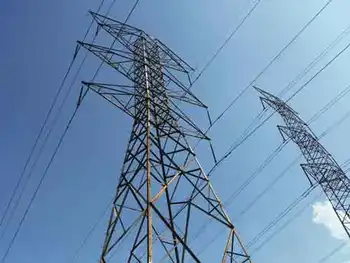Emissions change alteration would affect fewer power plants
Indeck, which operates five power plants in the state, is chafing under the requirements of the Regional Greenhouse Gas Initiative, or RGGI, the 10-state pact to tackle global warming.
The initiative, Indeck officials say, is good for the environment but imposes an unfair burden on some power producers. They say the rules saddle the company with unrecoverable costs of $1.6 million a year to buy what are called allowances, which permit companies to pollute — in Indeck’s case, nearly half a million tons of carbon dioxide dioxide at its plant in Corinth, N.Y., in the Adirondack foothills.
In late January Indeck filed suit against the state, claiming that it had no authority to impose the emission- control rules.
“We believe in doing our part,” said Peter Barden, an Indeck spokesman. But, he added, “This is a hit to our bottom line.”
Indeck, based in Illinois, is one of nine companies to ask the state to make RGGI less onerous, though it is the only one to file suit. States have the option of giving away part of their allowances to companies that are unable to pass along their cost to utilities because they must sell their power at a previously fixed price.
After meeting with officials from some of the companies, the governor angered environmentalists in early March when he said he would consider increasing the number of allowances that the state would give away.
But market analysts and state officials say a vast majority of the 95 electricity producers affected by RGGI — which aims to reduce carbon dioxide emissions by 10 percent by 2018 — appear to have no problem with the initiative.
That is because most of those companies, unlike Indeck, can recover the cost of paying for the allowances by passing it along to utilities, which in turn can pass along the cost to consumers. Producers can also resell their allowances in the secondary market if they donÂ’t need them, in a system known as cap-and-trade.
Most companies are expecting the federal government to act to curb carbon dioxide emissions at some point with a similar carbon trading program that the Obama administration and Democratic leaders are trying to push through Congress this year.
For many power producers, RGGI (pronounced reggie) serves as a useful introduction to carbon trading, said Milo Sjardin, an analyst with New Carbon Finance, a firm that tracks the carbon trading market.
“The essential role of RGGI is to set up the infrastructure of carbon trading in the United States and get companies familiar with the concept of carbon prices,” he said. “It’s been very successful at that end.” At the same time, the recession, by lowering demand for electricity, has also lowered carbon dioxide emissions, reducing the amount companies must pay to comply with the initiative.
Mr. Sjardin said that despite some complaints about the financial burden, no power producer is likely to pack up and leave the state. “The carbon prices are not significant enough to really cause large disruptions,” he said.
Power plants account for more than a quarter of the 188 million tons of carbon dioxide emitted each year in the Northeast and mid-Atlantic region.
Under RGGI, which covers 10 states from Maine to Maryland, companies buy their carbon allowances, sold by states at quarterly auctions. Each allowance grants a company permission to emit one ton of carbon dioxide.
Each state can decide what percentage of its allowances to sell at auction and what percentage to give away to companies that are financially burdened. New York, which currently auctions 97 percent of its 64 million allowances and sets aside 3 percent that can be given away, sells a higher proportion than most other RGGI states. (Of the 3 percent, 1 percentage point is set aside for companies that invest in renewable energy.)
The states are using the revenue from the auctions to invest in renewable energy sources and projects that would reduce energy use, thereby offsetting any increases in power rates.
Though most power producers can pass along carbon costs to the utilities that buy their power, some plants cannot recover that money because they are bound by long-term contracts that did not envision this new expense. Indeck EnergyÂ’s 128-megawatt plant in Corinth has a fixed-price contract with Consolidated Edison dating to 1989. The plant releases 480,000 tons of carbon dioxide, for which it has to pay $1.6 million in allowances each year at current auction prices.
Indeck and the eight other energy producers are asking state officials to even the playing field by either giving away allowances to the plants that cannot recover their costs or making the utilities that buy the power pay for the allowances, since they can pass the costs on to ratepayers.
If the state heeded the request, the percentage of free allowances would be increased to 11 percent, said Peter Iwanowicz, director of the climate change office at the State Department of Environmental Conservation. But some environmental groups oppose raising the number of free allowances because it would reduce the auction proceeds that go into a pot for energy-saving projects.
Mr. Paterson seems to have adopted a more guarded position on the allowances, as the Department of Environmental Conservation has been reviewing applications from the companies to allow the emission of 6.6 million tons of carbon dioxide, up from 1.5 million the state had reserved for companies that hold long-term contracts, at no cost to the companies.
Risa B. Heller, the governor’s communications director, said, “We will review whether to amend the RGGI rule if it is determined that there is a need to do so.”
Related News

Calgary's electricity use soars in frigid February, Enmax says
CALGARY - February was so cold in Calgary that the city used enough extra energy to power 3,400 homes for a whole year.
Enmax Power Corporation, the primary electricity utility in the city, says the city 's energy consumption was up 22,000 megawatt hours last month compared with Februray 2018.
"We've seen through this cold period our system has held up very well. It's been very reliable," Enmax vice-president Andre van Dijk told the Calgary Eyeopener on Friday. "You know, in the absence of a windstorm combined with cold temperatures and that sort of thing, the system has actually held up pretty…




